It’s Saturday in Athens
The Road to Game Day, and the People Who Build It
Picture Sanford Stadium. What do you see? A sea of 93,000 fans in red and black, cheering loudly as the Bulldogs storm the field maybe; or perhaps your memory is drawn to the Redcoat Band as they urge the crowd to grow louder and louder; or maybe you recall the fans sitting next to you during the 2019 Notre Dame game, when the lights went down and came back a brilliant, blazing red.
Whatever your memories of home games in Athens, they were built on the efforts of dozens and dozens of staff members at the University of Georgia who work hard to create unforgettable experiences and an incomparable environment.
And just like a successful football play requires every player to execute a precise, coordinated sequence of movements, so too does a successful Sanford Saturday require a different set of players to plan, prepare and perform at a high level.
As tens of thousands file into Sanford Stadium and head for their seats, each one will pass numerous concessions and merchandise stands. John Bateman, the assistant athletic director for marketing with UGA Athletics, wants to make it easy for every fan to enjoy that convenience.
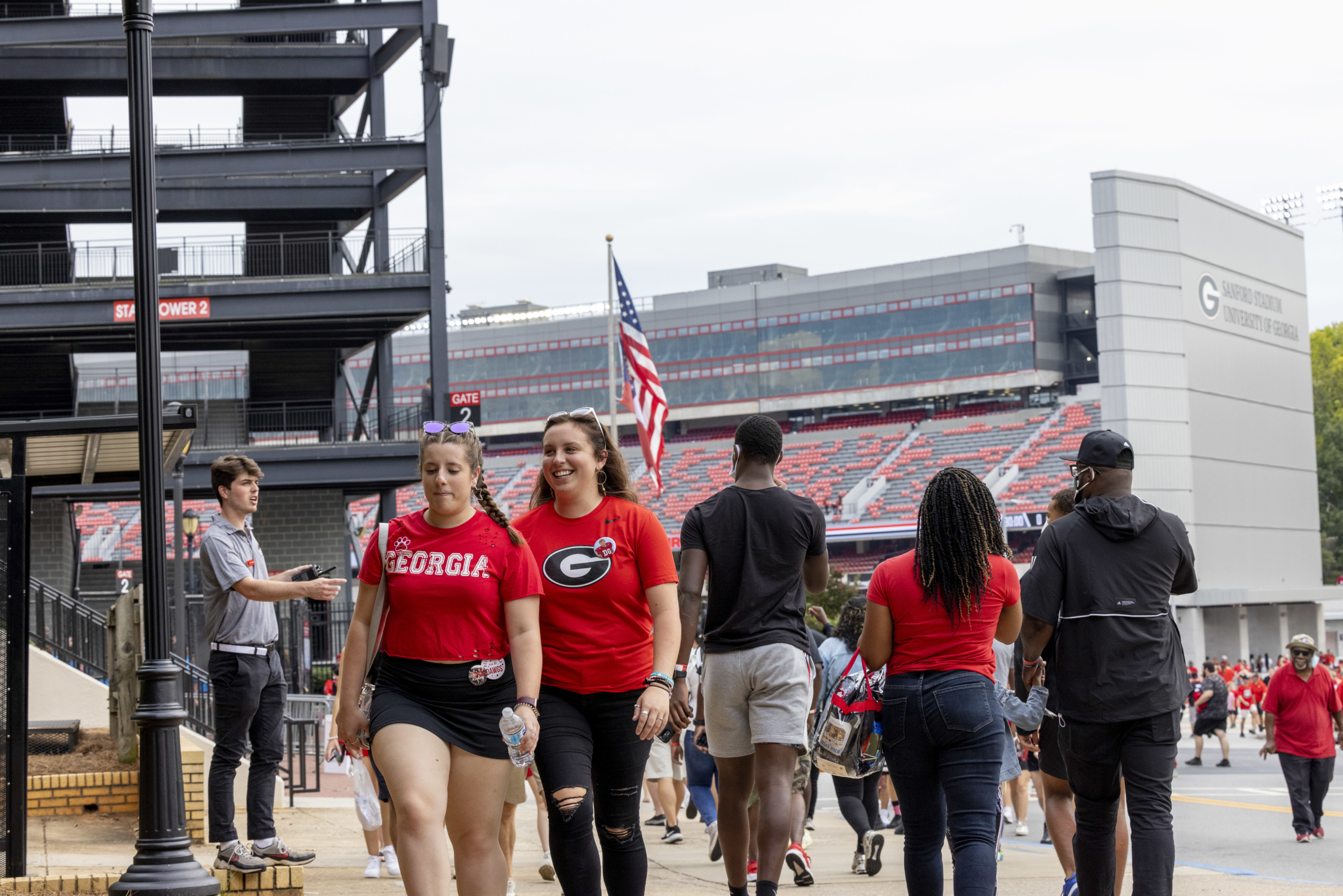
“We may not have an impact on the outcome of the game, but we do impact the fan experience,” John says. “Seeing people leave the stadium with a smile on their face — win or lose — is the most important thing for us.”
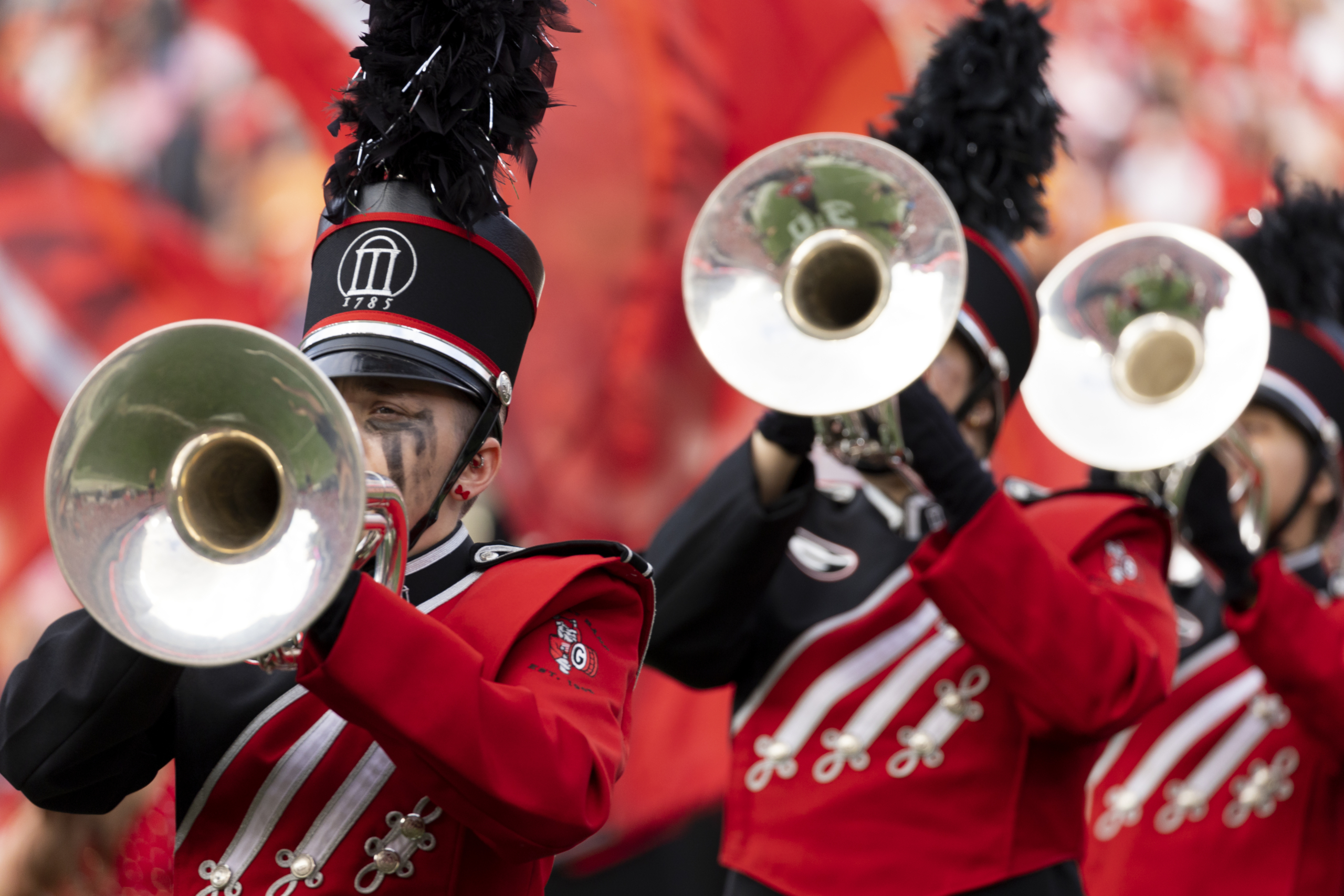
Like many stadium staff, John’s game day starts on Monday, at a football operations meeting that brings together every department with a game day role. If you’re picturing something like a modern-day, red-and-black Knights of the Round Table, you’d only be a little off.
After the meeting of the football minds, John takes a tour of the stadium, walking to every concession stand in Sanford to make sure that all the machinery — ice machines, coolers, heaters, etc. — are running efficiently.
John rarely stops moving once the football season starts. He is constantly checking with partners both internal and external to make sure everything is in place for Saturdays: power, equipment, staffing numbers, and much more. He is also in constant contact with the Georgia Redcoat Marching Band to ensure they have everything they need to embody the moniker Vince Dooley gave them: “The Heart of the Bulldog Spirit.”
And while the Bulldogs compete with a different opponent every week, John faces the same adversary again and again: the vastness of Sanford Stadium. While John and his team do their best to anticipate any potential hiccups, being able to communicate is key to resolving any situations with as little disruption to fans as possible.
“We have so many partners that all come together to make game day happen,” he says. “One of the most important things I do in preparation is to make sure that all of those partners know how and when to talk to each other.”
John’s work doesn’t usually grab headlines — except when it does, like the concessions price cuts announced in 2021 that John helped bring to life — but it does reinforce the bedrock of the Sanford Stadium fan experience.
The ball is snapped on fourth down in the final minutes of play, and over 90,000 spectators —with millions more watching around the world — lean to the edge of their seats, desperate to watch every action unfold. This is where Rick Freeman, senior broadcast engineer, comes in — the point person coordinating all of Sanford Stadium’s cameras and video board equipment.
In total, there are five stadium cameras that record the game, plus an additional six cameras from the television trucks, that Rick is responsible for coordinating. On Wednesdays, every camera is laid out in their positions along the sidelines of the field and Rick makes sure that their video feeds are transmitting back to the video board.
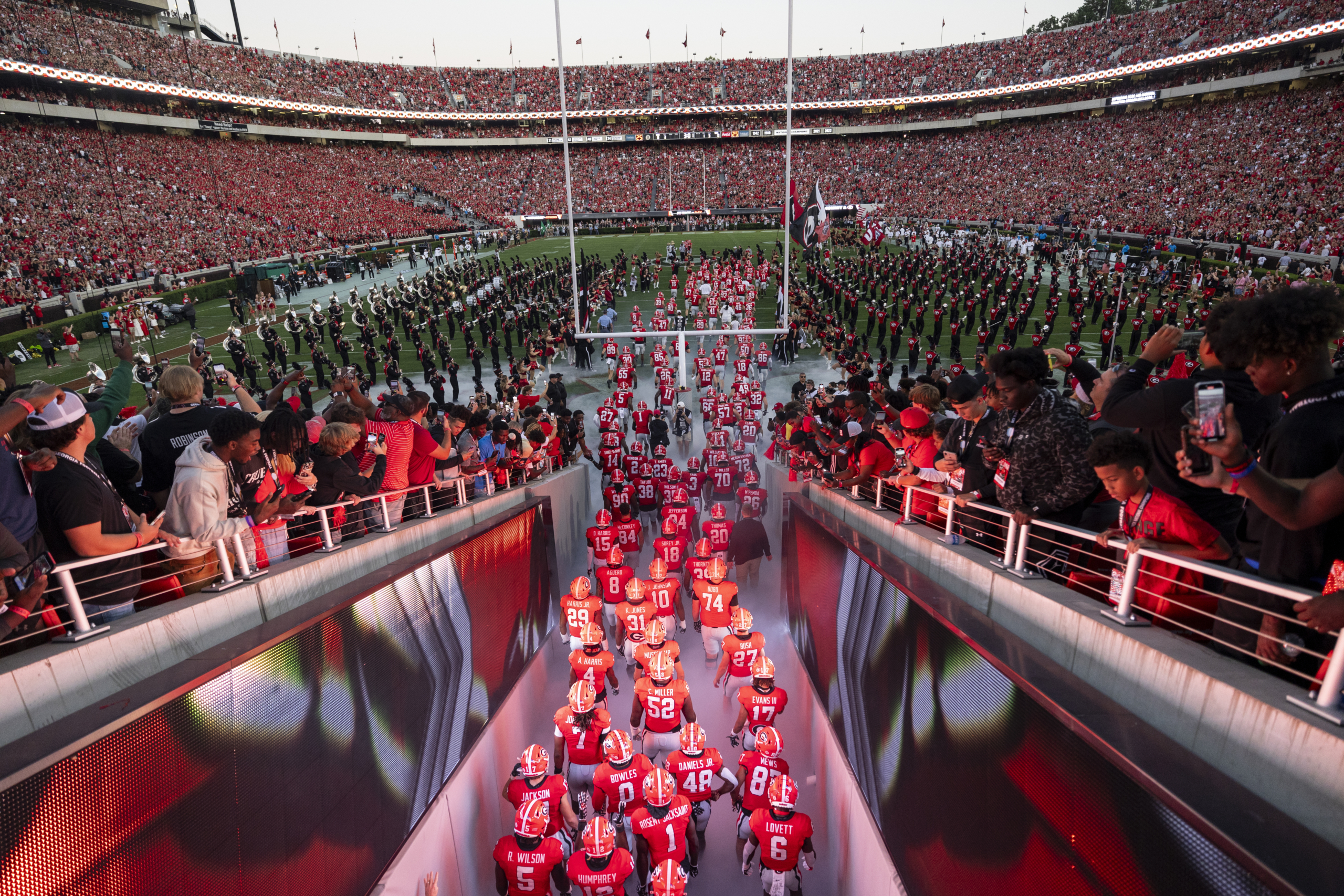
By the time Thursday comes, Rick is ready to run through the show with all the camera, video and sound elements. Collaborating here with the back-of-house producers, Rick and his team do a sort of dress rehearsal for all the technical aspects of game day.
Just like any other show, game days at Sanford require a script. From the promotional materials on the video board to any special guests being honored on the sidelines, the script outlines every main story beat planned for the game.
“We review every element of the script so that, from a technical side of things, I can help them pull off the show that they want and that the fans deserve,” he says.
On game days that will be televised, there are twice as many cameras and pieces of equipment that Rick must take into consideration, along with production crews from the broadcast partner.
After all the groundwork has been laid and the cameras are ready to roll, Rick says the highlight is seeing the team run out of the tunnel and the audience’s subsequent reaction.
“Knowing how much preparation has to happen before that moment, and then being able to see the intensity of the moment on the fans’ faces is just a huge pay off for me,” he describes.
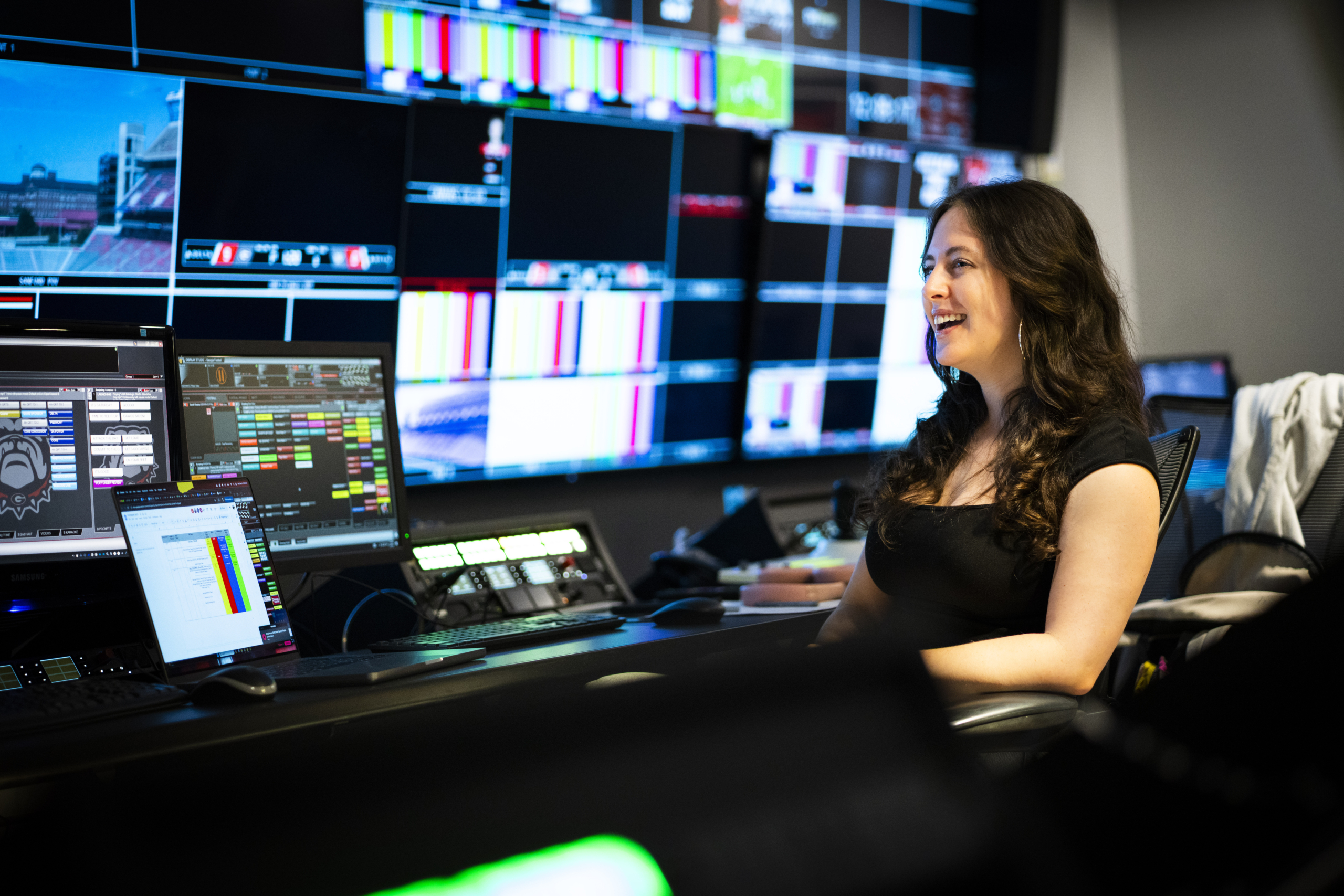
Lights shape a UGA game day: the light of the video board urging fans to get louder, stadium lights illuminating the game below, and the now-iconic red lights that ignite a Sanford Stadium night game. And no one cares more about those lights than Anna Pence, senior producer.
Everything that the fans see on the 52-by-100-feet video board goes through Anna and her team. The videos, promotions and presentations are all meticulously reviewed in a rigorous series of script reviews, sound checks and umpteen technology tests — all spearheaded by Anna.
“I try to have a backup plan for everything,” Anna says. “Technology is super fickle, as we all know, and you can’t really have a backup for every single situation during a live game, but I try to have a plan just in case something doesn’t work.”
During one of her favorite moments of preparation, Anna cuts a striking figure: In an empty stadium on Friday night, she stands alone to run the lights alongside the accompanying sounds from the video board to make sure everything is timed correctly.
“It doesn’t matter if it’s a night game or a noon game, we’re going to run the lights just the same,” Anna describes. “We want to give everyone the same electric atmosphere, no matter what game they come to.”
During the games, Anna stays in the media control room, wearing the same red bucket hat she’s worn since she began as senior producer back in 2016. From here, she can oversee the run of show from the back of house. But being tucked away in the control room doesn’t lessen the impact of the stadium’s biggest moments.
Like many, Anna has a crystal-clear memory of the 2019 Notre Dame game, when the stadium’s red lights premiered. In fact, Anna’s involvement was key to the lights’ major impact — it was her idea to shut off the lights in the stadium in the seconds before the red lights came on.
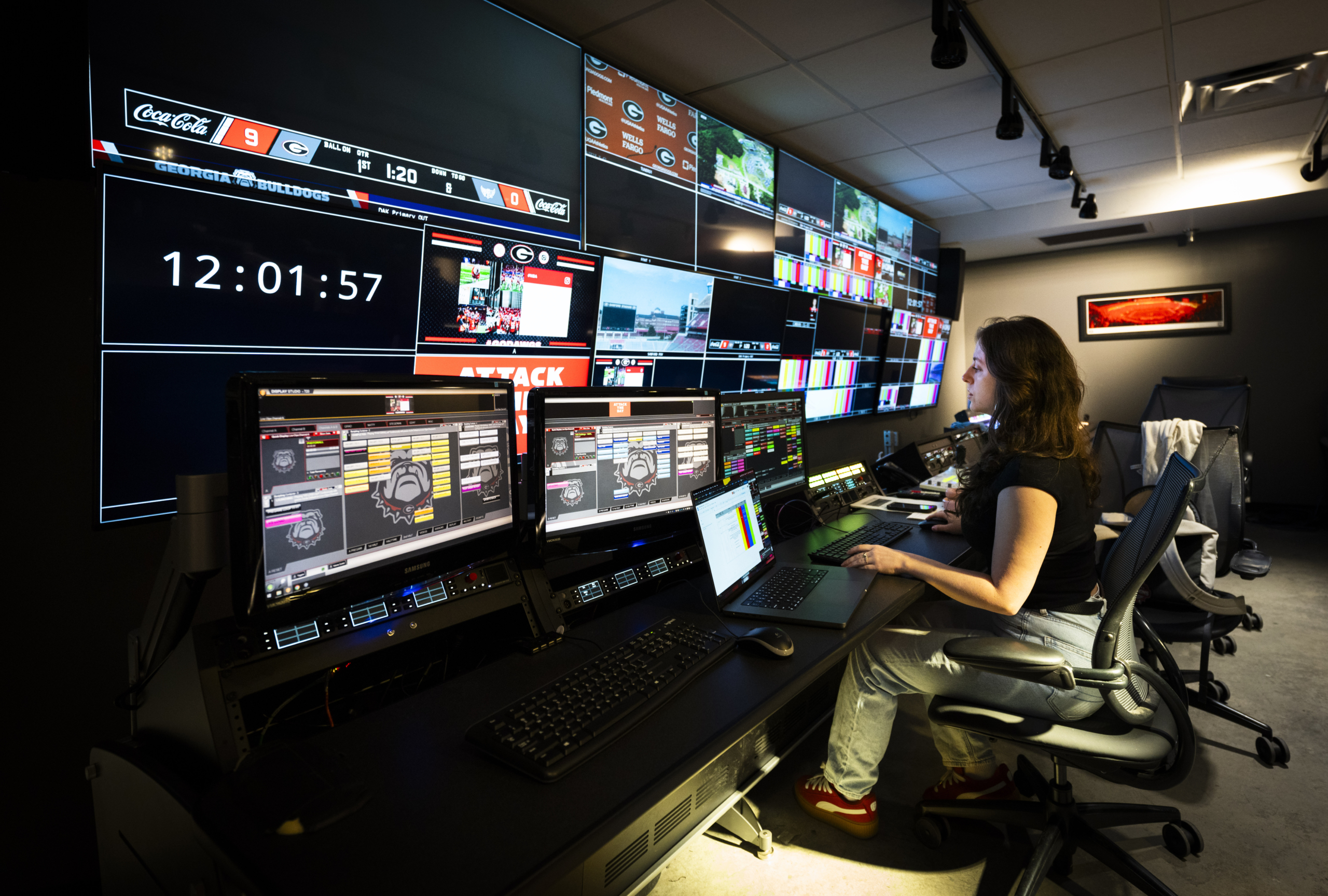
“I remember thinking that it would give the crowd a rush of endorphins because they would think the lights had gone out,” she remembers. “We had never just turned out all the lights in a stadium with almost 94,000 people.”
On cue, darkness fell and persisted for five seconds, then ten and eventually fifteen, and a thick tension descended. The plan had initially been to wait a full thirty seconds, but even from her station in the control room, Anna could feel the crowd growing restless. Making the type of split-second decision only a live production can provide, Anna cut the time short, red beams illuminated the crowd, sirens filled the air, and the moment entered Bulldog history.
“Even from the control room, I remember hearing an audible gasp from the entire crowd in that moment,” Anna says, reflecting on one of the highlights — pun intended — of her career.

 Rachel Perry (BBA ’93)
Rachel Perry (BBA ’93)